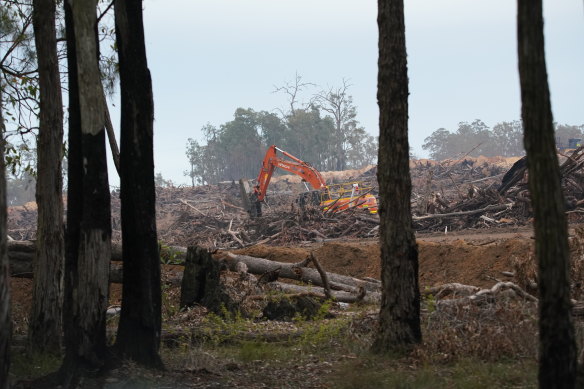Alcoa’s mining of bauxite in WA’s south-west will likely be topic to essentially the most detailed evaluation potential by the state’s unbiased setting watchdog.
The US aluminium specialist endured a barrage of dangerous publicity in its sixtieth yr in WA, together with revelations by this masthead that the state authorities was involved its clearing might hurt Perth’s water provide; that it piped water contaminated with poisonous firefighting chemical PFAS over a Water Company dam with out permission, and it was but to completely rehabilitate a single hectare of jarrah forest.

Alcoa has cleared 280 sq. kilometres of jarrah forest in WA.Credit score: Anon.
The WA Environmental Safety Authority introduced on Monday that Alcoa’s mining plans to 2027 will likely be topic to a public environmental evaluation, after it accepted a referral by environmental group WA Forest Alliance.
EPA chair Professor Matthew Tonts mentioned the authority would take into account potential impacts on vegetation, wildlife, water catchments from clearing, local weather change from carbon air pollution, and social environment from the noise, mud and clearing.
“These proposals contain the clearing of enormous areas of native vegetation, so there will likely be impacts to a variety of environmental values together with biodiversity and water sources,” Tonts mentioned.
Loading
“There’s additionally the potential for vital cumulative impacts to the northern jarrah forest.”
In addition to Alcoa’s mining, South32 mines bauxite within the forest and US-based Newmont owns Australia’s largest gold mine at Boddington.
Even with out mining, the forest that extends from inland of Perth to Collie is in bother. The UN Intergovernmental Panel on Local weather Change mentioned in 2022 the ecosystem was prone to collapse because of hotter, drier situations with extra bushfires.

